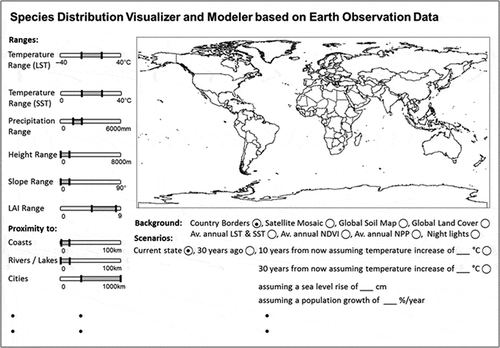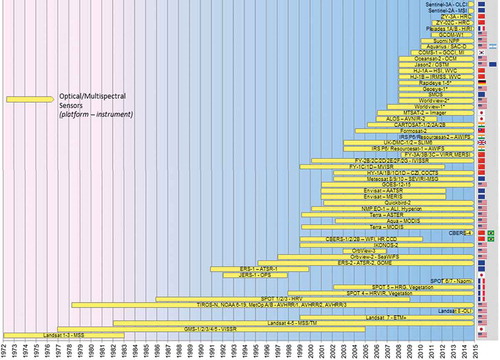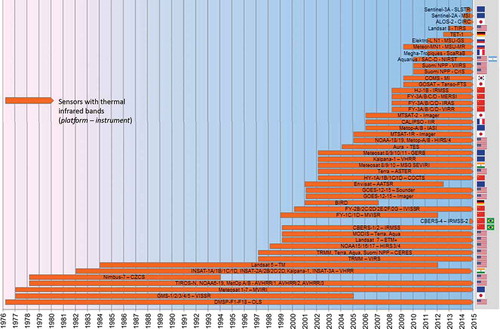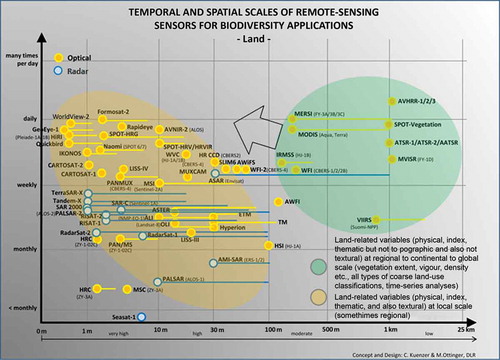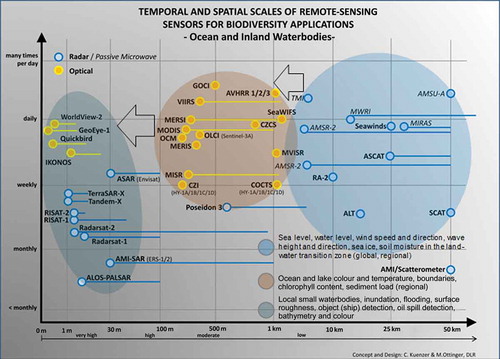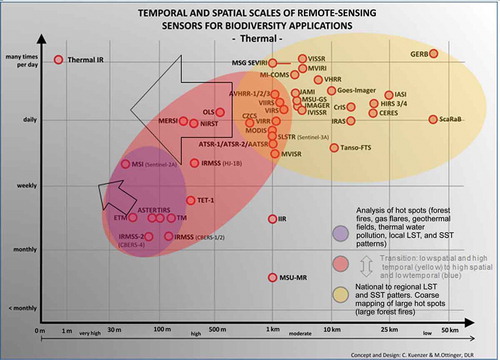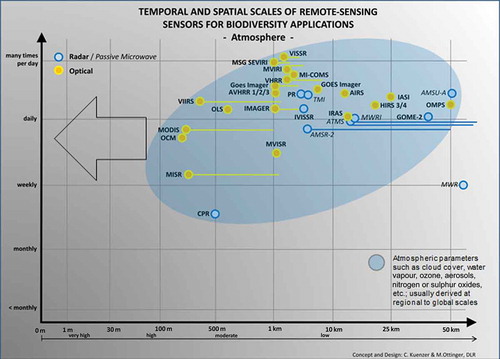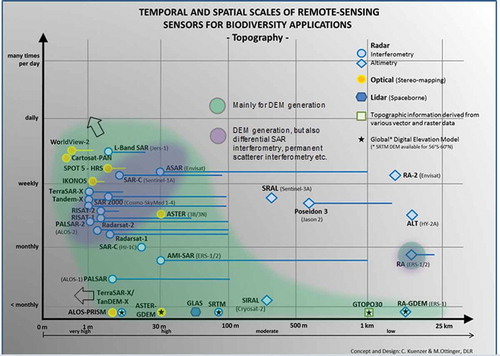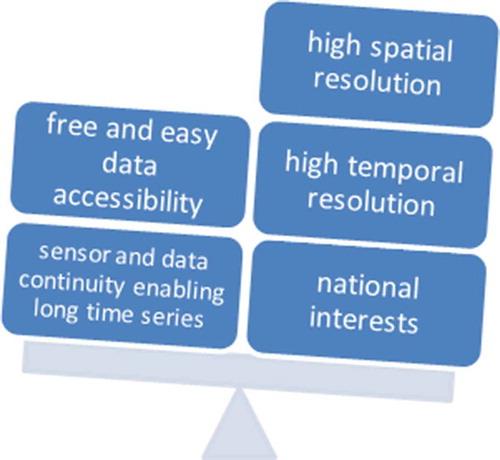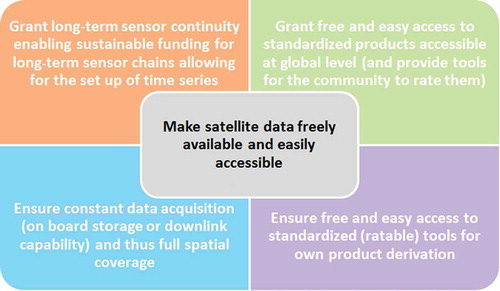Figures & data
Figure 1. Information relevant for biodiversity analysis that can be gained from remotely sensed data. We classify five types of variables, and examples of further products relevant for habitat analysis are presented. This is shown for the unitemporal case, assuming that only one data set is available and that multitemporal data or time series of data do not exist.
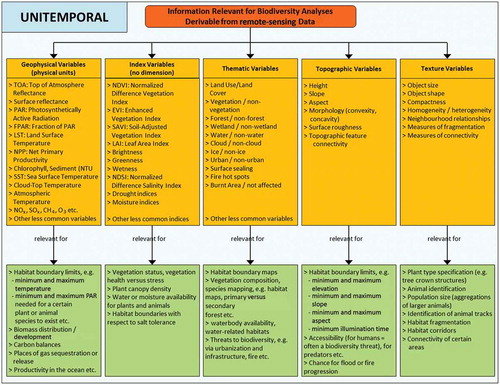
Figure 2. Information relevant for biodiversity analysis that can be gained from multitemporal remotely sensed data up to dense time series of data. Multitemporal data allow the monitoring of objects and habitats over time, and when long-term time series are available one can even observe trends (e.g. temperature shifts, snow cover duration shifts, etc.), and therefore slight geographic shifts of habitats.
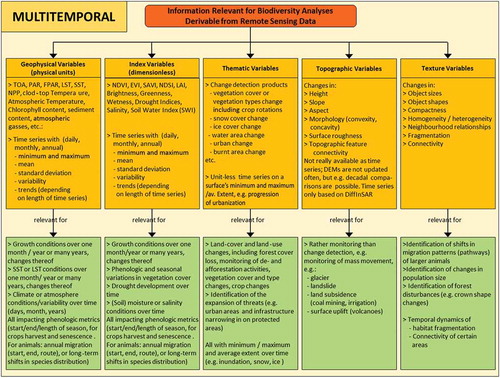
Figure 5. Timelines of major Earth observation satellites with radar and passive microwave sensing instruments.

Table 1. “Land” application-related sensors.
Table 2. “Ocean and inland waterbodies” application-related sensors.
Table 3. “Thermal” application-related sensors.
Table 4. “Atmosphere” application-related sensors.
Table 5. “Topography”-related sensors.
Figure 13. Our concept of an ideal “Species Distribution Visualizer and Modeller” based on remote-sensing data. If a near unlimited number of daily globally available variables could be provided as time series up to 30–40 years back into the past (plus granting future continuity), it would be possible to model selected past, current, and possibly future habitats of animals or vegetation species after simply moving a slider to define the crucial variables. Of course, additional biodiversity data including GPS migration and tracking data, field data (ground truth), and further ancillary data would increase the value of such a tool.
